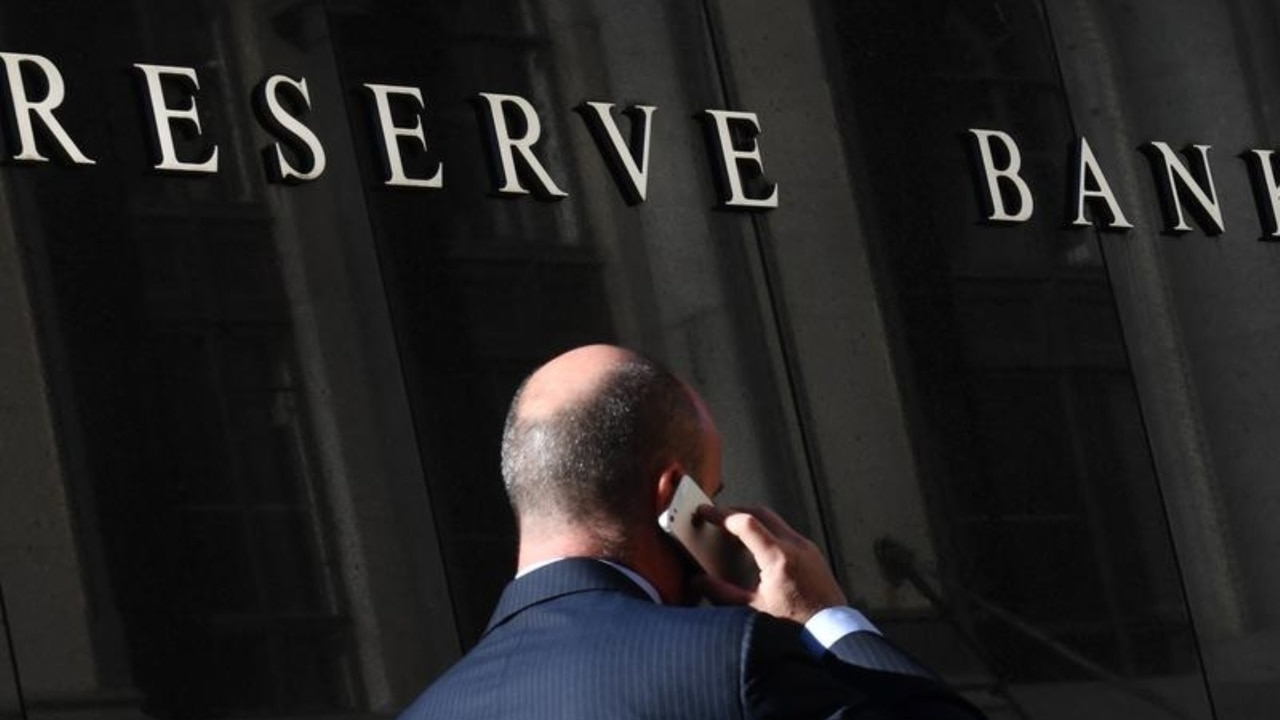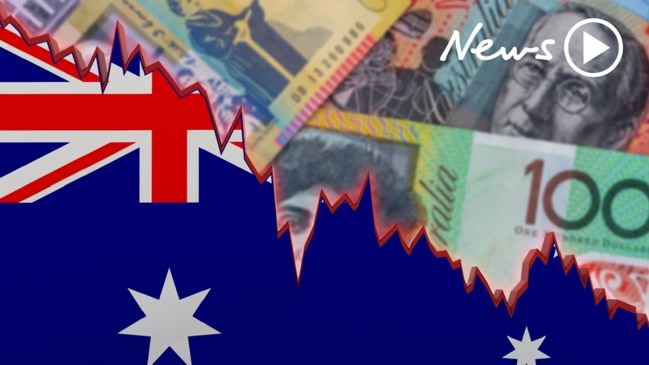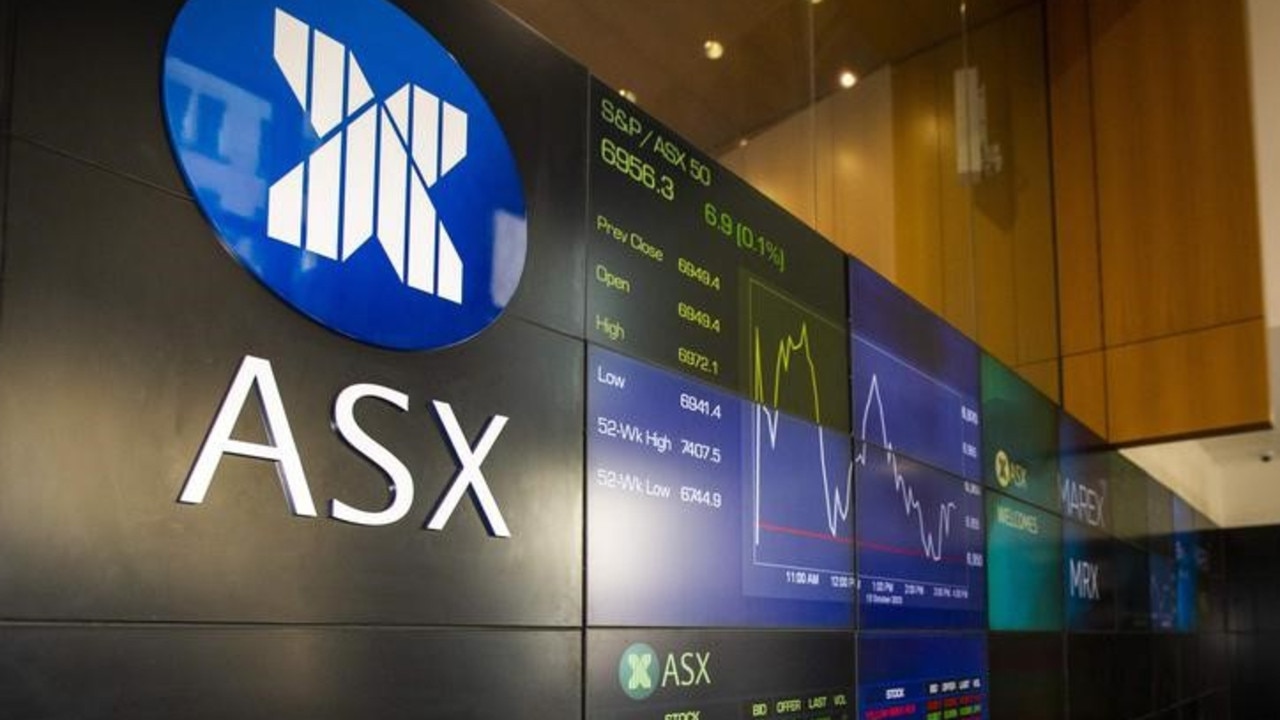Why the RBA is expected to cut cash rate next week
It looks like we’re about to get an interest-rate cut for the first time in two-and-a-half years — and it’s all because of one number.

Interest Rates
Don't miss out on the headlines from Interest Rates. Followed categories will be added to My News.
Zero per cent.
That was the shock number that emerged last week that could force the Reserve Bank to cut interest rates for the first time in more than two-and-a-half years.
Australian Bureau of Statistics data showed inflation ground to a halt in the March quarter with the consumer price index recording 0.0 per cent, dragging the annualised rate to 1.3 per cent.
The unexpectedly soft inflation reading, which came after similarly poor economic growth figures in March, has financial markets seeing an increased likelihood the RBA will cut the cash rate when the board meets next Tuesday.
The RBA last cut the cash rate to its current record low of 1.5 per cent in August 2016, following an earlier cut to 1.75 per cent in May. There hasn’t been a rate hike since November 2010.
CoreLogic head of research Cameron Kusher said persistently low inflation would likely be what finally forces the RBA to act.
“The RBA has undershot its inflation target for four years,” Mr Kushner said.
“The latest CPI data was much lower than they expected. The rhetoric from the RBA has been inflation will gradually drift back to the 2-3 per cent band, but the latest data shows it’s drifting away from it.”
The RBA may “potentially start to lose face” if it continues.
“They’ve held rates for 30 months now expecting inflation to tick up and it hasn’t,” he said.
Mr Kusher warned that since the financial crisis “things are skew-whiff”.
“People look at low rates as a great thing, when the reality is it’s trying to encourage people to spend,” he said.
“Higher rates means wages are growing and the economy is doing well. It is a little bit concerning that we’ve already got record low rates and we’re talking about taking them lower.”
Rate cuts are a “very blunt instrument”, he added. “It helps mortgage holders but it doesn’t help people trying to save. There are always going to be winners and losers.”
Even if the RBA does cut rates, it’s not guaranteed to flow through to mortgages.
Banks have been raising rates since the second half of last year because interest rates in overseas markets, where they get most of their wholesale funding, have been rising in line with the US Federal Reserve.
The average principal-and-interest standard variable rate is currently about 4.41 per cent for owner-occupiers and 4.85 per cent for investors, according to Canstar.

AMP Capital chief economist Dr Shane Oliver is predicting two rate cuts this year bringing the cash rate down to 1 per cent.
“A rate cut, whether it’s in May or June or July, will tell us that the Australian economy is not growing as fast as it could or should and inflation continues to remain too low,” Dr Oliver said.
“It’s not saying we’re in a recession or unemployment is about to surge, but it is saying growth has slowed down and that is a risk to the economy.”
One of the main factors causing that sluggish growth is falling house prices.
Sydney and Melbourne have now fallen 14.5 per cent per cent and 10.9 per cent from their respective peaks in July and November 2017, their worst falls on record.
Data released on Wednesday showed while the pace of declines appear to be slowing, weakness is spreading to regional areas and previously resilient cities like Hobart.
“The housing downturn is weighing on consumer spending,” Dr Oliver said.
“The pressure has been increased by very low inflation numbers we saw last week. We were originally looking for two rate cuts in August and November, but the CPI numbers brought that forward.”
So what’s causing the persistently low inflation?
“The simple answer is constrained demand in the economy, which is leading to ongoing spare capacity,” Dr Oliver said.
“When companies have spare capacity they discount and compete heavily. An obvious example of that spare capacity is 13 per cent of the workforce are unemployed or underemployed — the equivalent number in the US is 7 per cent.”
There is an “added overlay” of competition from technological innovation.
Airbnb, Uber and Amazon have all put pressure on “big chunks” of the economy like hotels, transport and retail that in the past had more limited competition.
“We’re spending more and more of our dollar online, that of course is creating problems for bricks-and-mortar retailers, which are having to discount,” he said.
The ABS said the March quarter CPI result was due to price rises in a number of goods and services being “fully offset by a number of price falls”.
“The most significant rises in the March quarter were vegetables (+7.7 per cent), secondary education (+4.2 per cent) and motor vehicles (+2.4 per cent),” the ABS said.
“Drought and adverse weather conditions continue to reduce the supply of a selection of fruits and vegetables.”
The rises were “offset by falls in automotive fuel (-8.7 per cent), domestic holiday, travel and accommodation (-3.8 per cent) and international holiday, travel and accommodation (-2.1 per cent)”.
Prime Minister Scott Morrison last week wouldn’t be drawn on interest rates.
A rate cut at the May 7 RBA meeting, just under two weeks out from election day on May 18, would undermine the Coalition’s message that the economy is strong.
“I don’t speculate on what the Reserve Bank does,” Mr Morrison told reporters in Townsville on Friday.
“They are their decisions and I’m happy for them to make those decisions.”
But Treasurer Josh Frydenberg said if there was a cut, banks must pass the reduction on in full.
“I’d say to the banks treat your customers first,” Mr Frydenberg told reporters in Melbourne.
“Put people before profits and pass through to them the true benefits that flow from any interest rate changes.”
Shadow treasurer Chris Bowen told AAP the Prime Minister was out of touch with working people.
“Every time Scott Morrison and the Liberals tell Australians how well the economy is travelling under them there seems to be new data out showing that things are heading in the wrong direction,” Mr Bowen said.
“Just weeks ago, the government’s own budget showed that economic growth is down, consumption is down and wages are down.”
— with AAP

Originally published as Why the RBA is expected to cut cash rate next week



